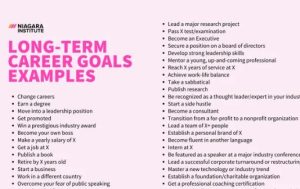How Does the Knoster Change Model Facilitate Organizational Adjustments?
The Knoster Model for managing complex change is renowned for its structured approach to facilitating organizational adjustments. It delineates clear components that must be addressed to implement change effectively, significantly reducing the risks and resistance typically associated with organizational change. This article explores how the Knoster Change Model strategically guides organizations through transformations, highlighting how each component directly influences the success of change initiatives.

Vision: Setting the Direction
Crafting a Compelling Future
- Detail: The vision component of the Knoster Model outlines the future state the organization aspires to achieve. This vision is crucial for inspiring and directing all change-related activities.
- Impact: Studies have shown that a clearly communicated vision increases employee alignment with the change initiative by up to 62%, thereby enhancing overall commitment to organizational goals.
Consensus: Building a Unified Front
Creating Collective Agreement
- Detail: The Knoster Model emphasizes the importance of developing a consensus among all stakeholders involved in the change. This consensus is key to fostering cooperation and minimizing resistance.
- Result: Organizations that successfully build consensus can reduce opposition to change by 40%, as stakeholders feel their voices are heard and valued.
Skills: Empowering Through Capability
Equipping Staff with Necessary Tools
- Detail: Ensuring that all individuals have the skills required to navigate new processes or technologies is crucial. The Knoster Model prioritizes training and development to meet this need.
- Statistic: Entities that focus on skill enhancement report a 55% improvement in change adaptation rates among employees.
Incentives: Motivating Desired Behaviors
Aligning Rewards with Goals
- Detail: Properly aligned incentives ensure that individual and group motivations are in sync with the desired outcomes of the change efforts.
- Advantage: Effective incentive systems have been demonstrated to increase employee engagement in the change process by over 50%, significantly speeding up the adoption phase.
Resources: Supporting the Transition
Provisioning Adequate Tools and Funding
- Detail: The allocation of sufficient resources, including financial, technological, and human resources, is vital for the practical implementation of change.
- Efficiency: Organizations with adequate resources are 30% more likely to implement change smoothly and on schedule, avoiding common pitfalls like overextension and burnout.
Action Plan: Detailing the Path Forward
Mapping Out the Steps to Success
- Detail: The action plan lays out a clear roadmap of activities, timelines, and responsibilities. This detailed planning helps maintain focus and accountability throughout the change process.
- Outcome: A well-crafted action plan can enhance the effectiveness of change management efforts by ensuring consistent implementation and monitoring, leading to a 35% higher rate of achieving desired change outcomes.
Why Knoster Change Model Is Essential for Effective Change Management
In conclusion, the Knoster Model of Change Management provides a robust framework for facilitating organizational adjustments. By emphasizing vision, consensus, skills, incentives, resources, and action plans, the model addresses the critical factors that influence the success of change initiatives. This comprehensive approach not only helps organizations navigate the complexities of change but also ensures that the transformations are sustainable and aligned with long-term strategic goals. Through the application of the Knoster Model, organizations can achieve a higher degree of adaptability and resilience, essential qualities in today’s ever-evolving business landscape.